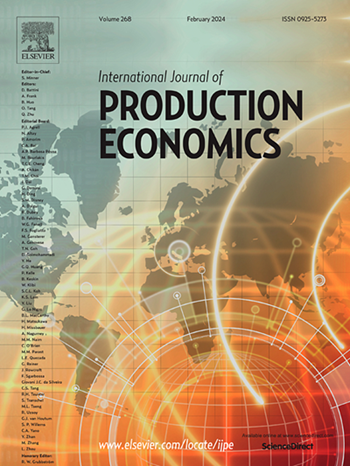Skill-and-Knowledge Sharing HUB-CI model for resilient production systems
IF 10
1区 工程技术
Q1 ENGINEERING, INDUSTRIAL
引用次数: 0
Abstract
The use of innovative technologies and the integration of efficient human-robot interaction have had a significant influence on all facets of modern manufacturing. While automation has advanced, numerous tasks still depend on human operators due to their superior dexterity and reasoning abilities. Augmented reality (AR) has emerged as a critical enabler, enhancing the skills of less-experienced workers, improving operational resilience, and enabling rapid adaptation to disruptions. This study presents a novel skill-and-knowledge-sharing paradigm for manufacturing systems. The architecture, called HUB-CI (a hub for collaborative intelligence), facilitates an efficient learning protocol. The model uses quantified learning curves to evaluate operator performance over time and incorporates AR-driven skill and knowledge sharing to reduce response times, optimize scheduling makespan, and improve resilience metrics such as system stability, adaptability, and recovery speed under disruptive conditions. Numerical experiments reveal that HUB-CI significantly decreases response times and improves scheduling makespan by up to 20.52 % after 500 iterations, (p-value <0.01) and achieves consistent performance gains under disruptive conditions, due to its ability to maintain makespan robustness within 5 % of the non-disrupted baseline. In more stable environments with converging agent skill levels, the model sustains strong performance, demonstrating its versatility. By integrating quantified learning curves with four core resilience metrics—adaptability, collaboration and visibility, robustness, and sustainability—HUB-CI enables adaptive task allocation and real-time collaboration, offering a substantial advancement in cyber-collaborative production systems.
弹性生产系统的技能和知识共享中心- ci模型
创新技术的使用和高效人机交互的集成对现代制造业的各个方面都产生了重大影响。虽然自动化已经取得了进步,但由于人类操作员的灵活性和推理能力,许多任务仍然依赖于他们。增强现实(AR)已经成为一个关键的推动因素,提高了经验不足的工人的技能,提高了操作弹性,并能够快速适应中断。本研究提出了一种新的制造系统的技能和知识共享范式。该体系结构称为hub - ci(协作智能中心),促进了高效的学习协议。该模型使用量化的学习曲线来评估作业者随时间的表现,并结合ar驱动的技能和知识共享,以减少响应时间,优化调度最长时间,并提高系统稳定性、适应性和破坏性条件下的恢复速度等弹性指标。数值实验表明,HUB-CI在500次迭代后显著减少了响应时间,并将调度最大完工时间提高了20.52% (p值<;0.01),并且在中断条件下实现了一致的性能增益,因为它能够将最大完工时间鲁棒性保持在非中断基线的5%以内。在更稳定的环境中,随着智能体技能水平的不断收敛,该模型保持了强大的性能,证明了它的多功能性。通过将量化的学习曲线与四个核心弹性指标(适应性、协作和可见性、鲁棒性和可持续性)相结合,hub - ci实现了自适应任务分配和实时协作,为网络协作生产系统提供了实质性的进步。
本文章由计算机程序翻译,如有差异,请以英文原文为准。
求助全文
约1分钟内获得全文
求助全文
来源期刊
CiteScore
21.40
自引率
7.50%
发文量
266
审稿时长
52 days
期刊介绍:
The International Journal of Production Economics focuses on the interface between engineering and management. It covers all aspects of manufacturing and process industries, as well as production in general. The journal is interdisciplinary, considering activities throughout the product life cycle and material flow cycle. It aims to disseminate knowledge for improving industrial practice and strengthening the theoretical base for decision making. The journal serves as a forum for exchanging ideas and presenting new developments in theory and application, combining academic standards with practical value for industrial applications.

 求助内容:
求助内容: 应助结果提醒方式:
应助结果提醒方式:


